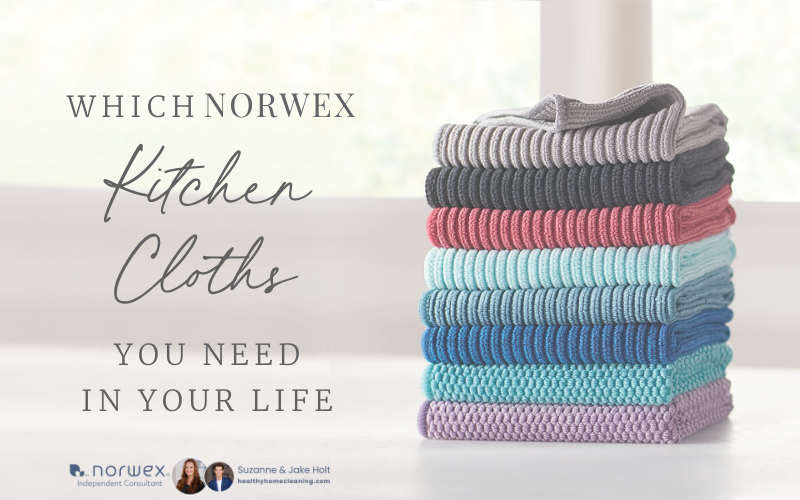
As a consultant, a frequently asked question I get is “Which cloth should I use in the kitchen?.” Like the Norwex towels, this isn’t a quick answer, as there are many options! I’m going to share the most popular used cloths in the kitchen, and break down what tasks they’re great for. My goal: reduce confusion and help you decide on what you need for your kitchen now (and what you’ll want later)!
Dish Cloth – netted
This Dish Cloth looks like a net. It’s made of nylon, not microfiber, and is meant for washing dishes. You’ll never want to wash dishes with anything else once you try this!
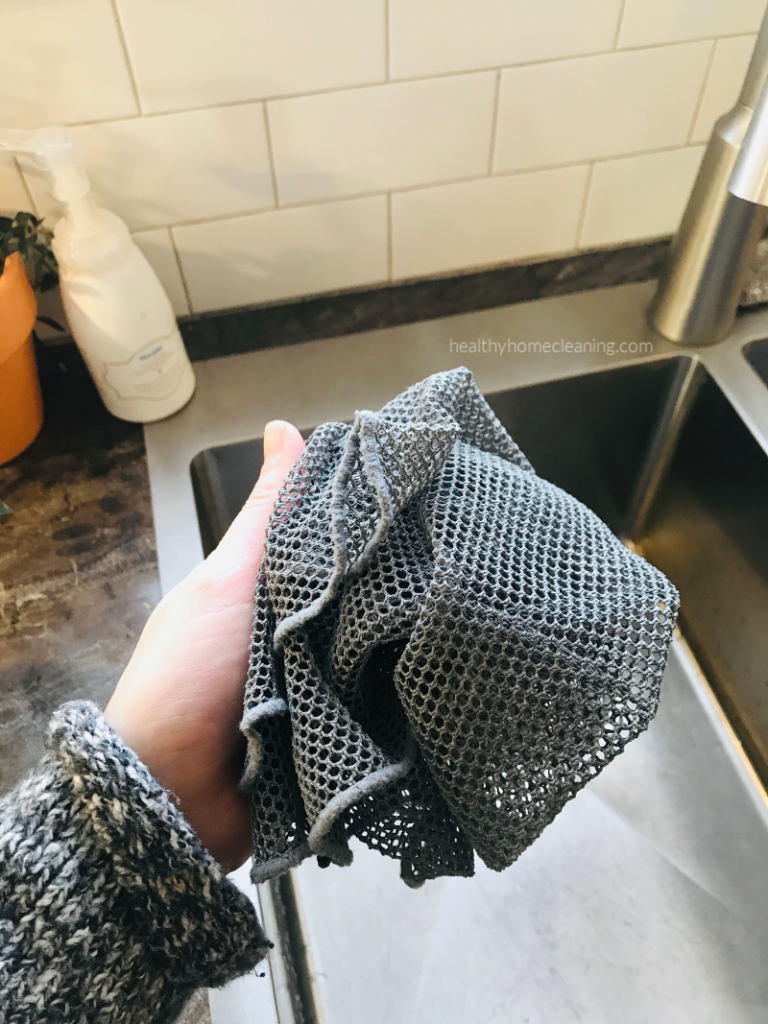
How to Use:
Use with a sink of soapy water. Scrunch it up in your hand, put it in the water, and scrub those dishes! When done, rinse out. Drape over your drying dishes to dry. THIS WILL NOT GET STINKY. EVERRRRRR.
How to clean it: When there’s egg or cheese stuck in it, or you know it’s just been a while, lay on top of your glasses on the top rack of your dishwasher. Run it through a cycle with your dishes. It’ll come out like new! Or, throw in the washing machine with anything else. Don’t put it in the dryer (the edges will get fuzzy and it won’t be *as* new looking anymore, but there’s no actual harm done).
BAKER’S BONUS: You know how when you bake and flour gets on the counter, it’s gets all gloopy and hard to rub off once it gets wet? The Norwex Dish Cloth is the best cloth for grabbing that sticky flour! Simply get it damp, and gather the flour. Rinse, then scrunch it up, and rub any leftover sticky parts. They’ll lift instantly!
Stainless Steel Cloth
The Stainless Steel Cloth is as it sounds – meant for polishing up your stainless steel appliances! It is a two sided cloth. It has a fine, zig zag weave on one side, and a smooth weave on the other. It’s meant for giving your stainless steel appliances a shine again. Use it to get rid of food spatter, spots, prints and streaks.
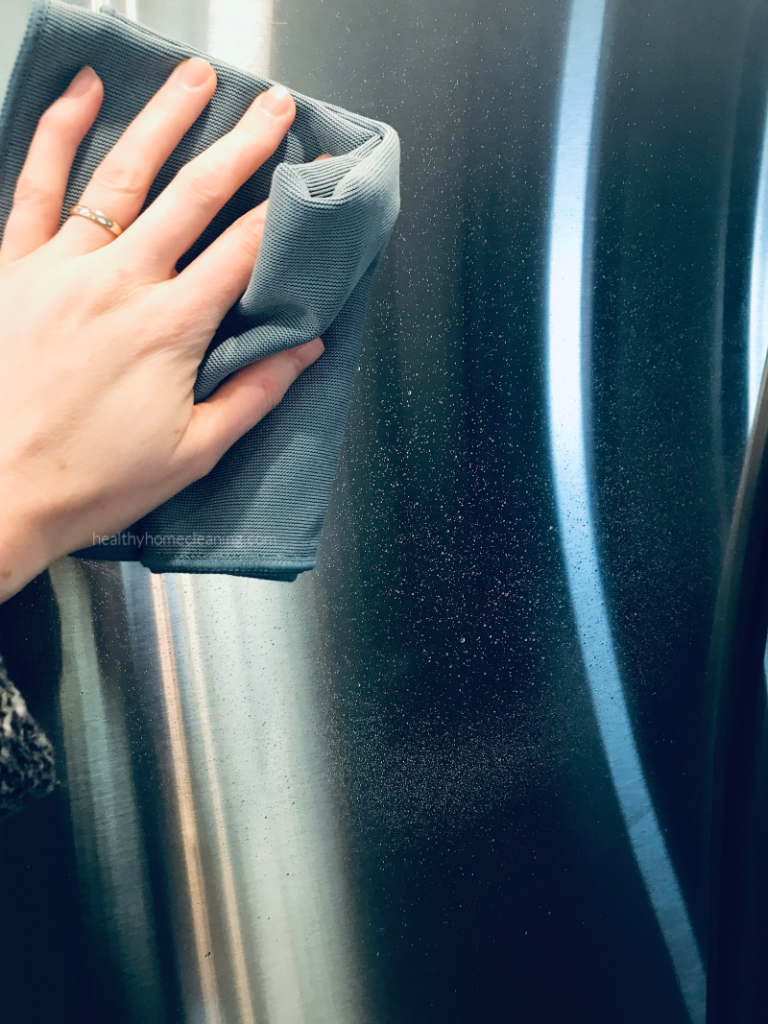
How to Use
My favourite way to use it is to get it damp. I fold it into fourths, then use the zigzaggy weave side to remove food, sticky bits and smears. I then turn it inside out and wipe it down again with the smooth side.
Another method people use is to spray the appliance with water from a spray bottle, then use the cloth dry to polish up the surface, wiping with the zigzag side first, then polishing with the smooth side.
This cloth contains BacLock, so it’ll last you many uses before it’s time to launder.
BONUS: I like to also use this cloth to wipe down my white cupboards, the glass front of my stove, and polish my kettle and faucet so they shine!
*If you have a buildup of cleaner on your appliance, you might want to use this deep clean method to strip it, first.
How to Clean
Rinse between uses. When it gets heavily soiled, or you say to yourself, ‘Gee, it’s been a while since I laundered this thing,’ throw it in the washer and dryer, following the recommended washing instructions for Norwex microfiber.
Kitchen Cloth
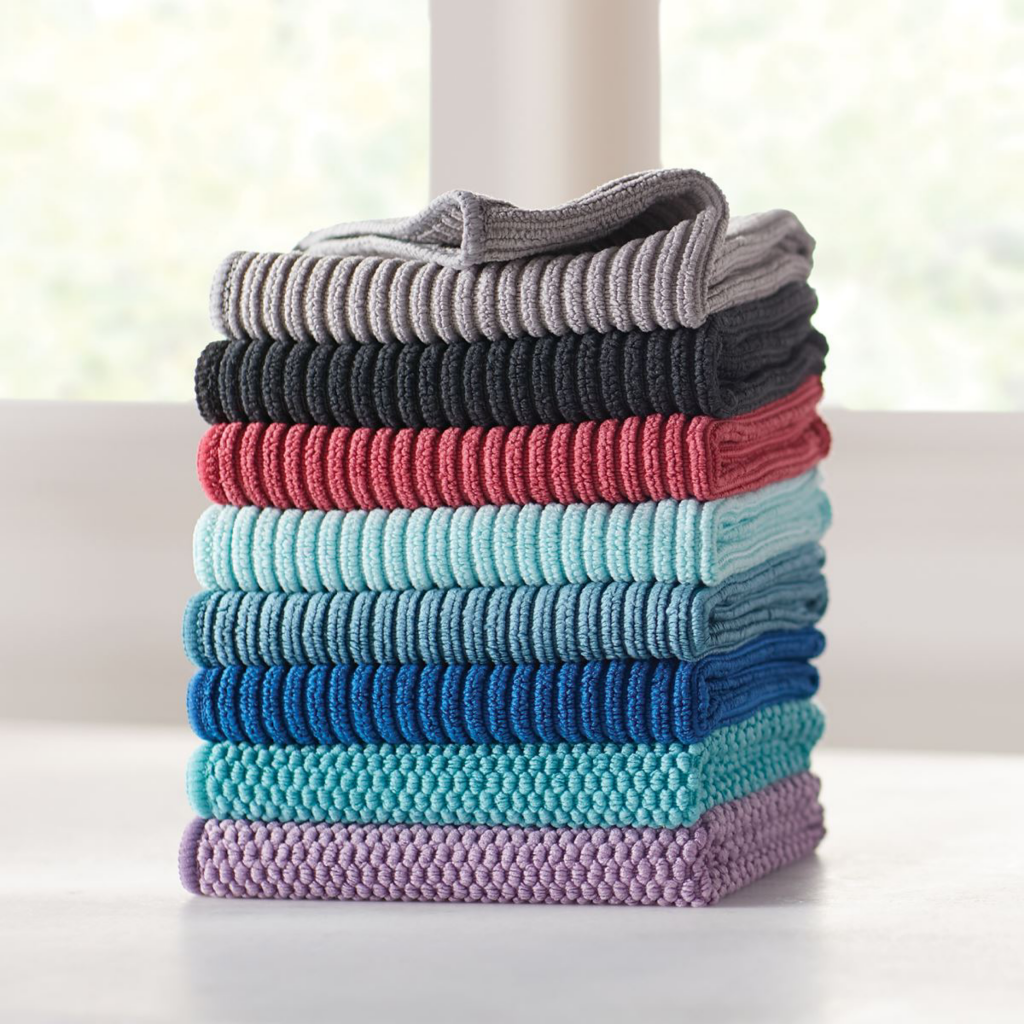
The Kitchen Cloth, made of densely woven, superfine Norwex Microfiber physically removes up to 99% of bacteria from a surface using only water when following proper care and use instructions. Because of this, it doesn’t need soap or any other type of disinfectant cleaner to clean up kitchen surfaces effectively. It’s ribbed, so it holds onto crumbs really well. It’s thin, so it dries really well in between uses. Plus, it contains BacLock, so it purifies in between uses.
To Use
Get wet with JUST water. Fold flat and wipe down dirty surfaces. Rinse well, hang to dry from its tag. Once it’s heavily soiled, launder. I personally prefer to launder my Kitchen Cloths at the end of everyday. I have a lot of them in my drawer, so that’s easy. For others, they go another day or two in between uses. If using longer than a day, just rinse really well under hot water to avoid dirty (and smelly cloths), and to rinse out any excess bacteria.
NOTE on Dishes: this cloth is not intended to wash dishes in a sink of soapy water. It was designed for wiping surfaces. It can be used in soapy water to wash dishes IF you’re using a dishwashing soap that doesn’t contain fillers. The Norwex Dishwashing Liquid is a great option for you! The best use is the Dish Cloth in the sink of dishes, and the Kitchen Cloth on your kitchen surfaces.
Kitchen Cloth with Textured Weave
This textured Kitchen Cloth is the same size as the Kitchen Cloth mentioned above, but is thicker. It also has a textured weave on one side, and a weave similar to an EnviroCloth on the other. This densely woven, superfine Norwex Microfiber physically removes up to 99% of bacteria from a surface using only water when following proper care and use instructions. It also contains BacLock.
My personal preference for general wiping down of kitchen surfaces has become this cloth. I love that it’s thick, but not too big, and not too small. This cloth comes in an Amethyst color, and is sometimes available in other exclusive colors throughout the year.
Use and care is the same as the Kitchen Cloth.
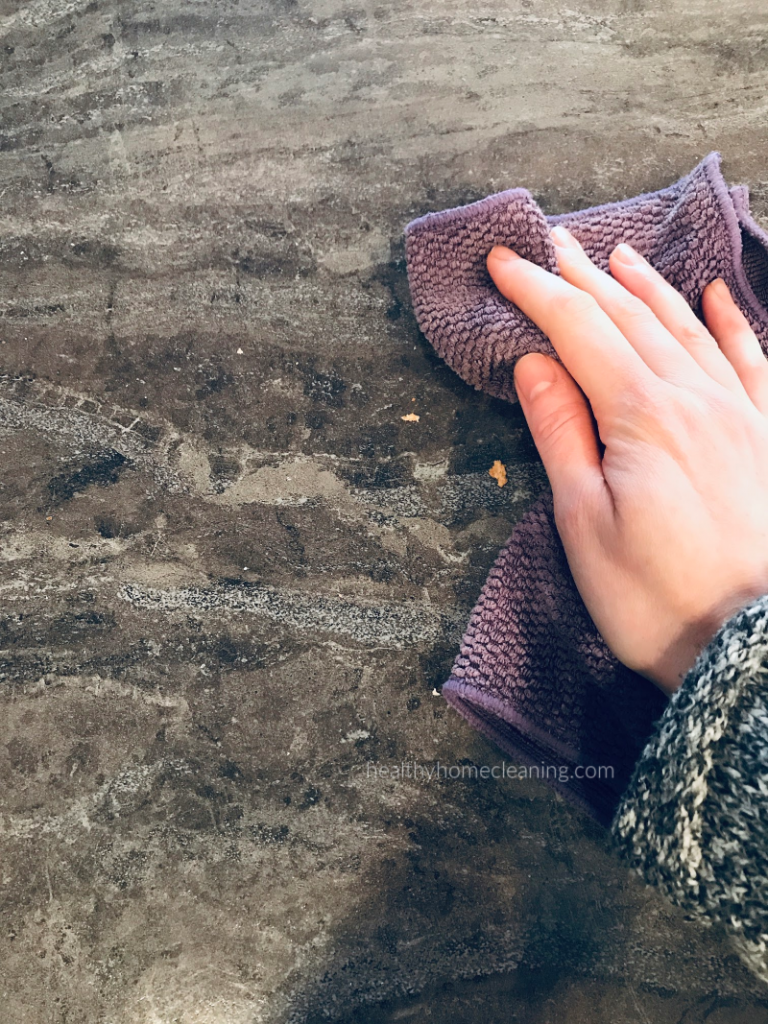
EnviroCloth
The EnviroCloth, known to many as the ‘Everything Cloth,’ can also be used in the kitchen, and performs the same as the Kitchen Cloth, grabbing 99% of bacteria from surfaces.
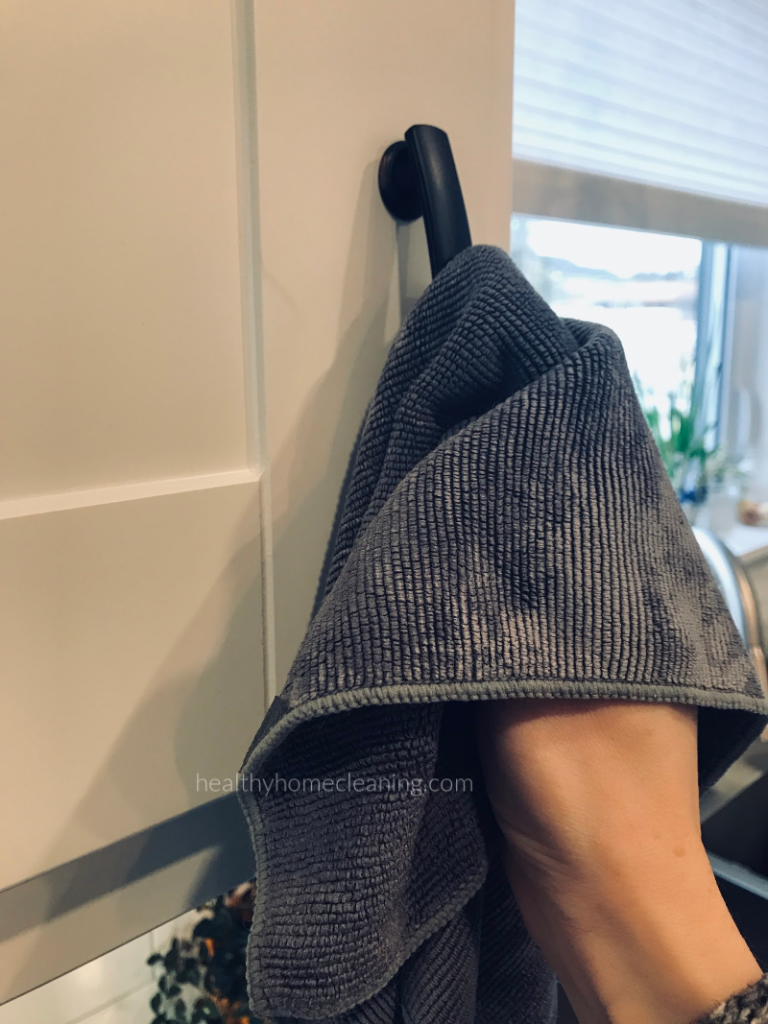
The EnviroCloth is also thicker and bigger than the Kitchen Cloth. I like how the Kitchen Cloth is thinner and smaller in size, so it’s drying more quickly in between uses. This is helpful in preventing odors, as the BacLock does need the cloth to dry to work the most effectively. That being said, there is no reason you can’t use the EnviroCloth in the kitchen to wipe down surfaces.
In my home, I find it helpful to use the EnviroCloth for general purpose cleaning jobs around the house, and having a set of Kitchen Cloths dedicated to the jobs in the kitchen.
To Use
Get wet with JUST water. Fold flat and wipe down dirty surfaces. Rinse well, hang to dry from its tag. Once it’s heavily soiled, launder.
Counter Cloth
The Counter Cloths are extra absorbent cloths with a popcorn weave. It’s the same size as a half-sheet of paper towel. Use this dry for: absorbing spills, wiping hands. Use this wet for: wiping sticky messes or hands, and quick wipe ups of sticky handles. It’s basically a replacement for your paper towel.
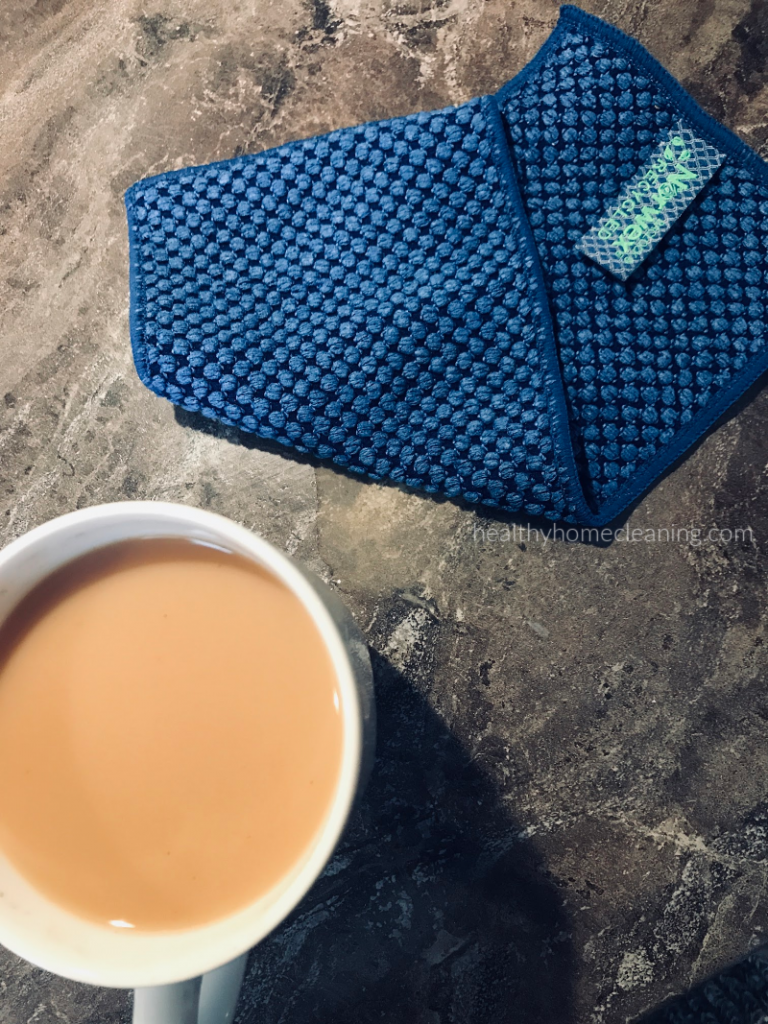
To Use
To absorb spills, use dry. Place over spill, allowing it to absorb the moisture. Wipe if necessary. Rinse well after cleaning the spill. Hang to dry. The BacLock in these self-purify it as it dries, so you can now use it again for the next spill!
To clean sticky surfaces or hands, get damp. Wipe, rinse, and hang to dry. Launder once heavily soiled, or at the end of the week of using them over and over again.
Some people like to use these as their general counter wiping cloths. Technically, they can do that (they can remove 99% of bacteria from a surface). However, I find them too small for large surfaces, and much prefer using my Kitchen Cloth to wipe countertop, etc.
PROTIP: use these to replace napkins. I like to toss them in lunch bags when I pack something messy, like oranges. They’re also great for cleaning buttery fingers from popcorn on movie night!
Window Cloth
The Window Cloth is the BOMB for polishing glass surfaces like: glass doors, oven doors, ceramic stovetops, faucets, kettles, windows and wine glasses.
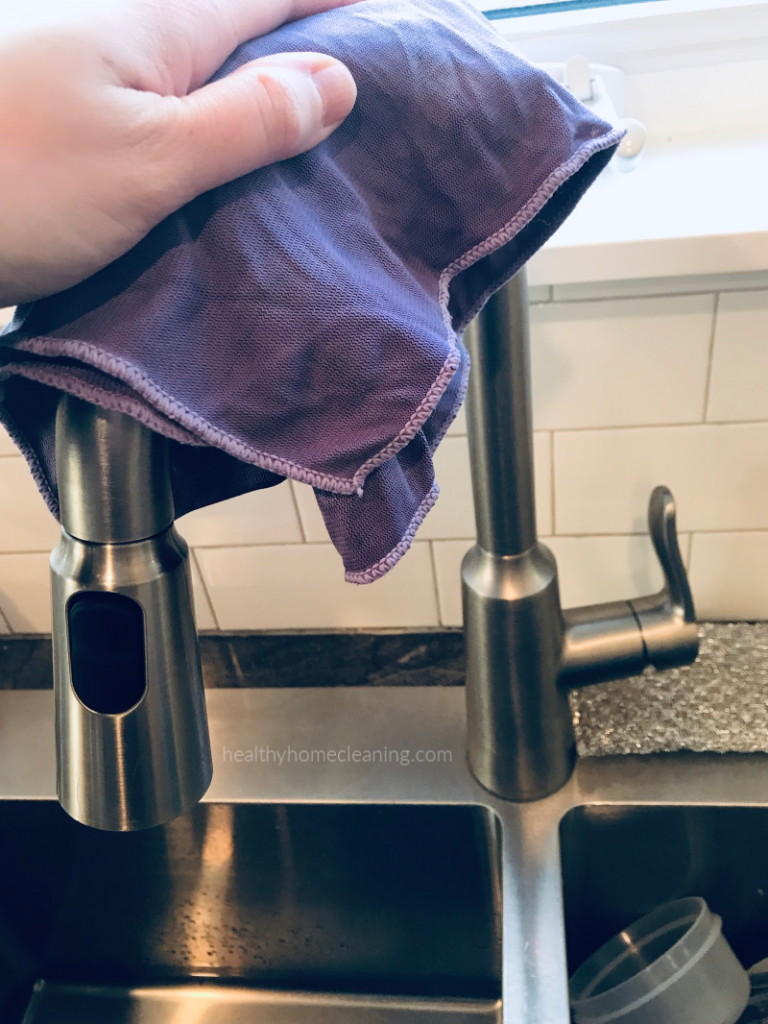
How to Use
Get slightly damp. Fold into fourths. Polish the thing you want to polish. Look at yourself in the gleam. Rinse, hang to dry, and keep using until it’s super dirty (it has BacLock!). Throw it in the laundry every once in a while!
Kitchen Towel
The Kitchen Cloth and Textured Kitchen Cloth both have a towel in the same weave. They are both good for: absorbing big spills, drying countertops, drying dishes, and drying hands. I love these because the BacLock enables them to self-purify in between uses. Which means you’re not drying your hands on a nasty towel!
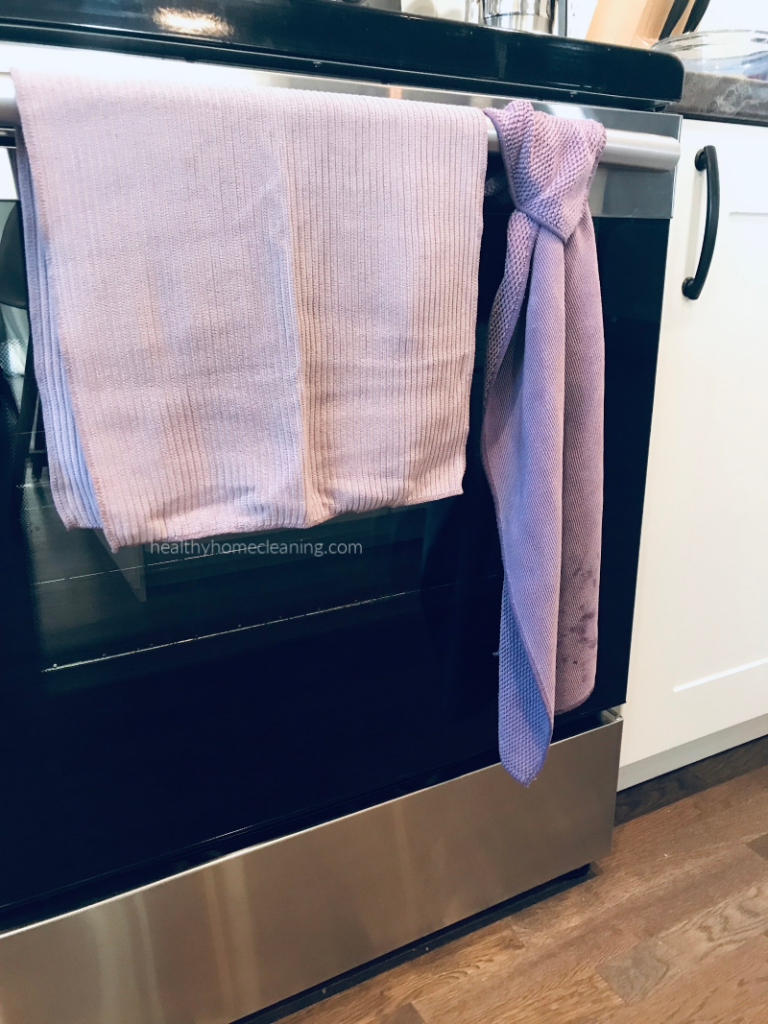
PROTIP: Hang on the stove by looping through its tag, and it won’t fall on the ground or be nabbed by pets or little kids
I hope this guide has helped you decide what cloths you could use the most in your daily and weekly kitchen clean! You can get any of them over at my shop.
Thanks for stopping by!
~Suzanne

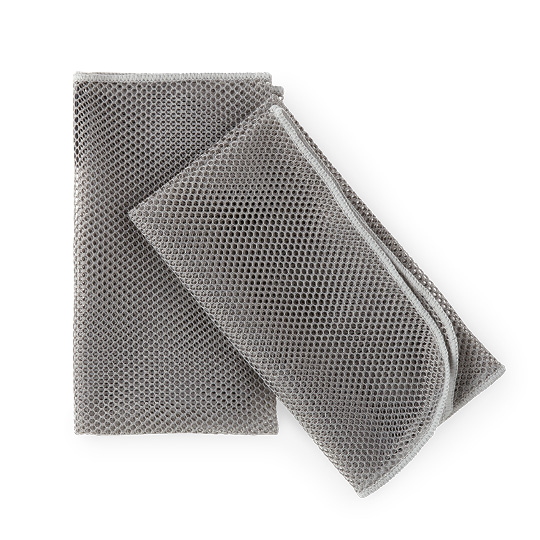

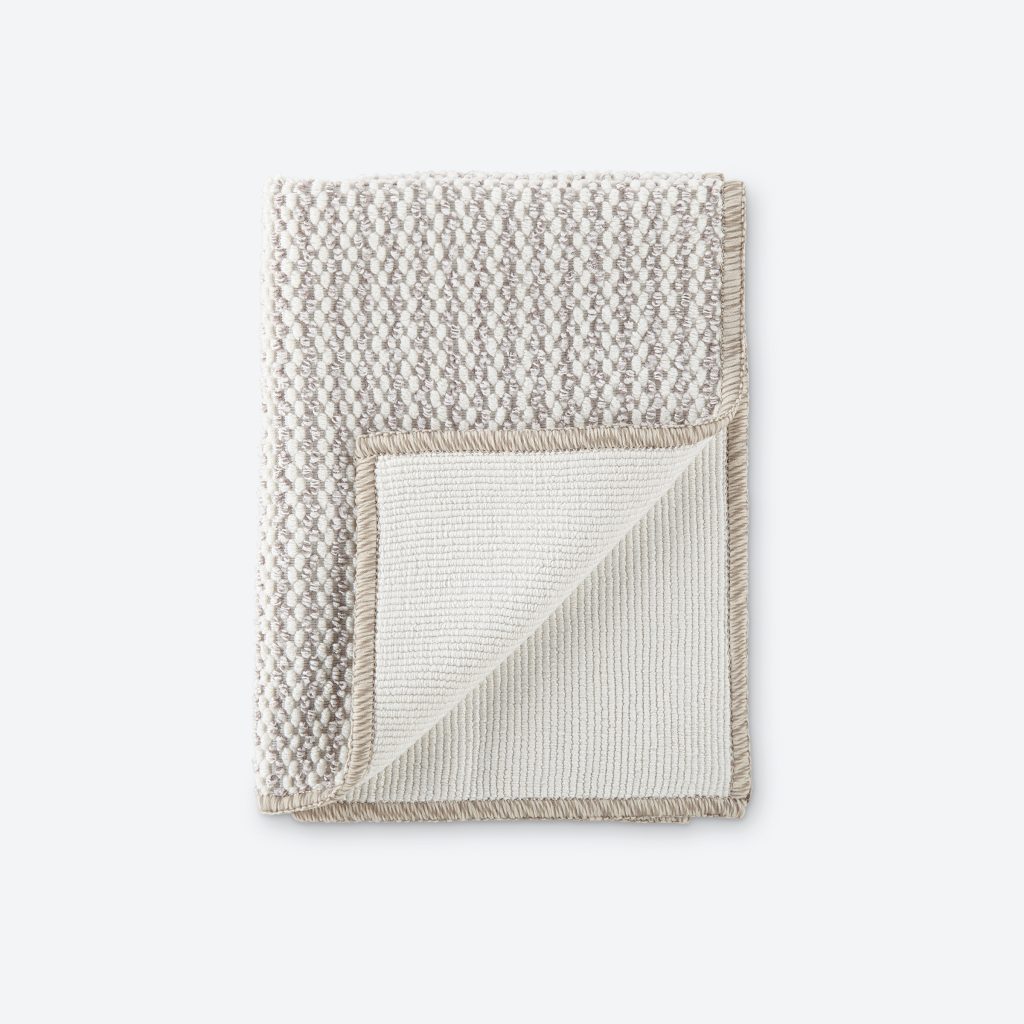
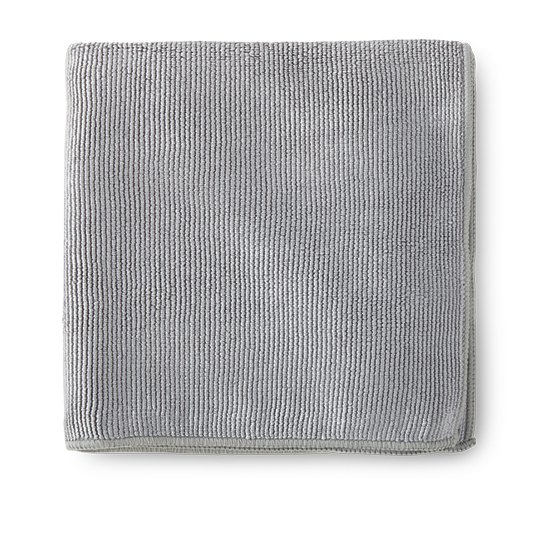
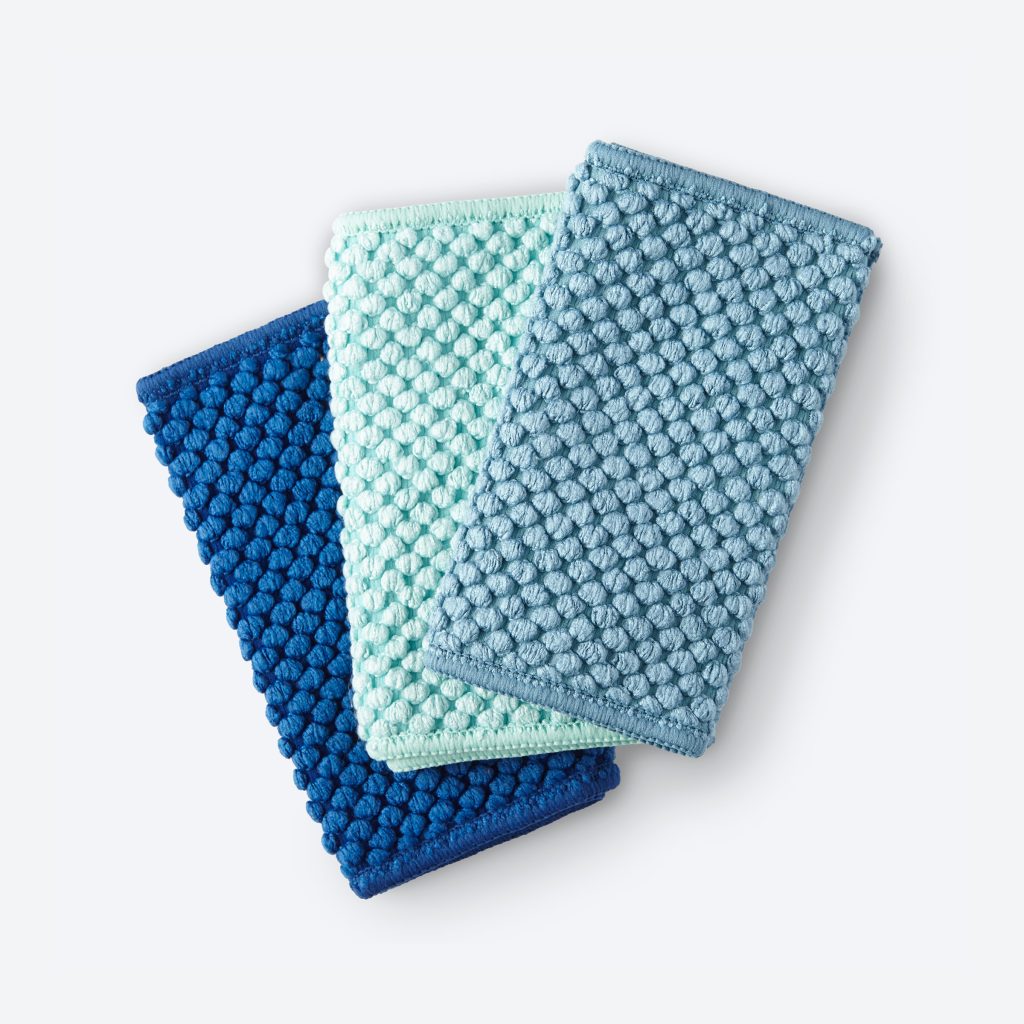
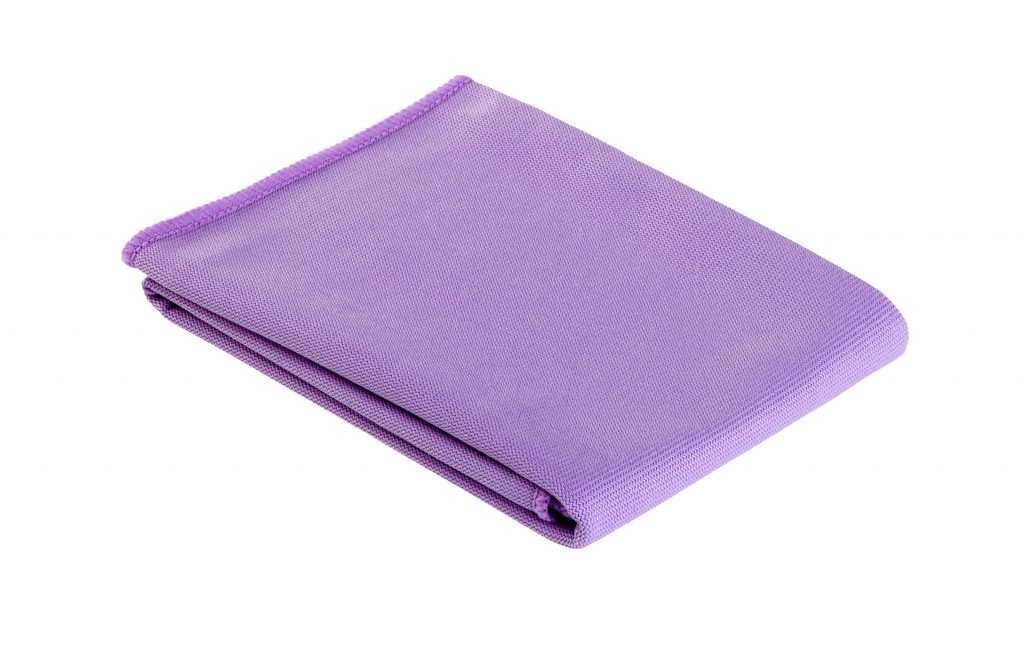



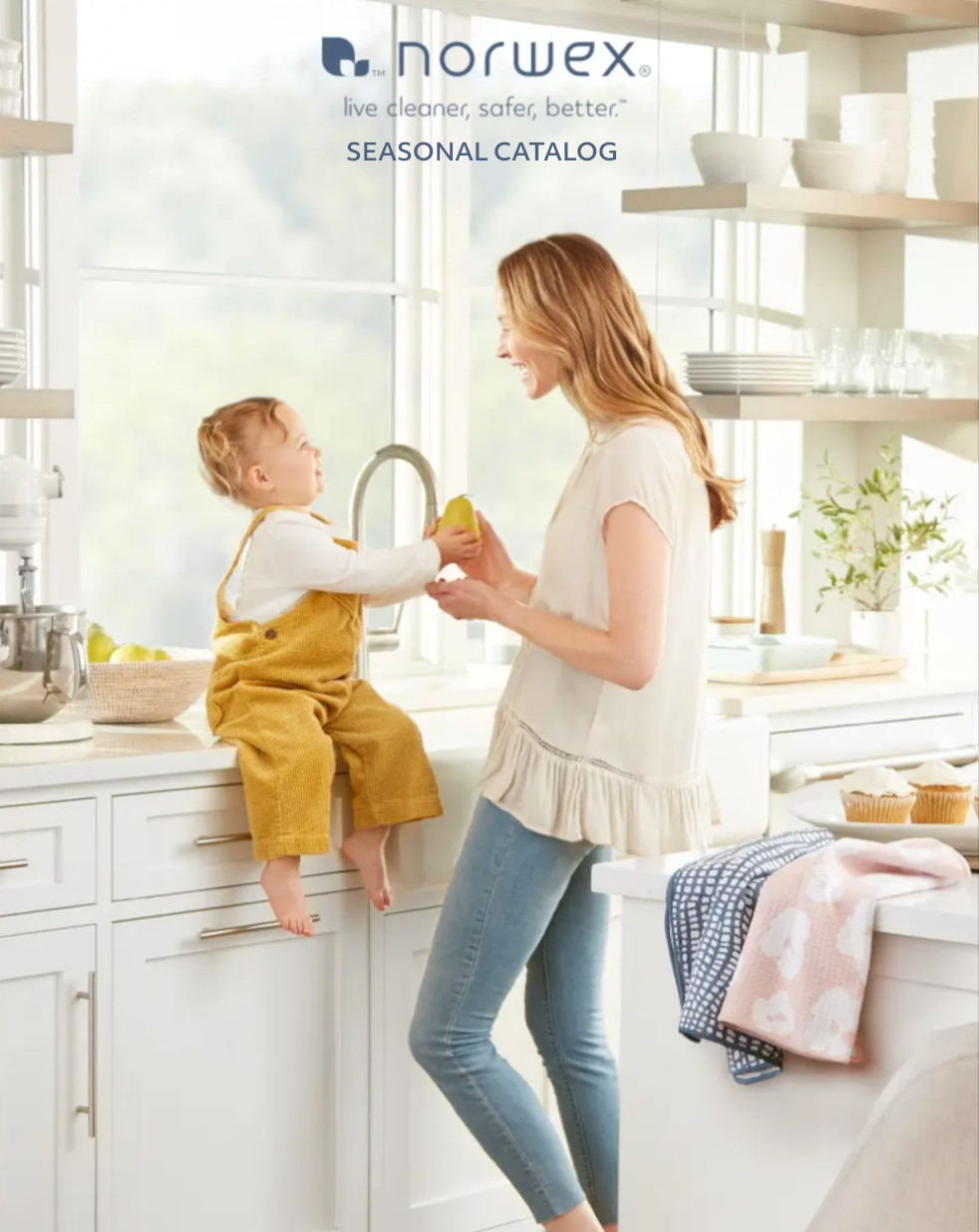
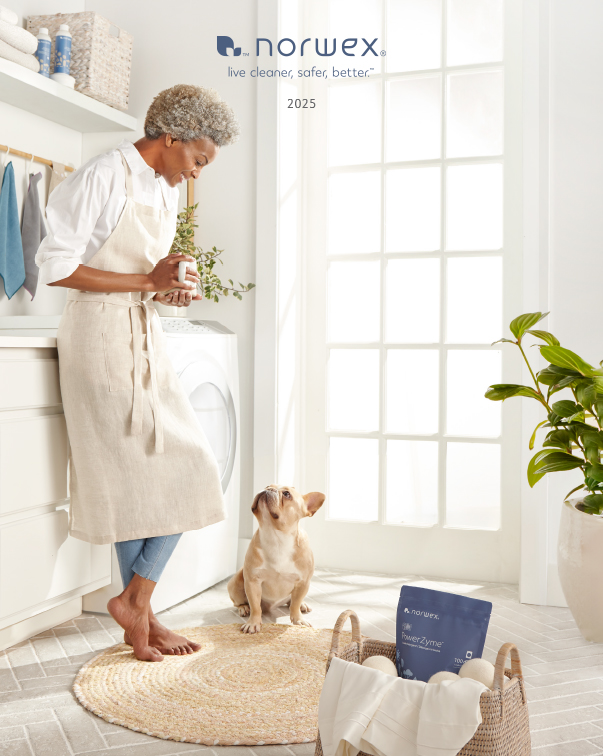
Leave a Reply